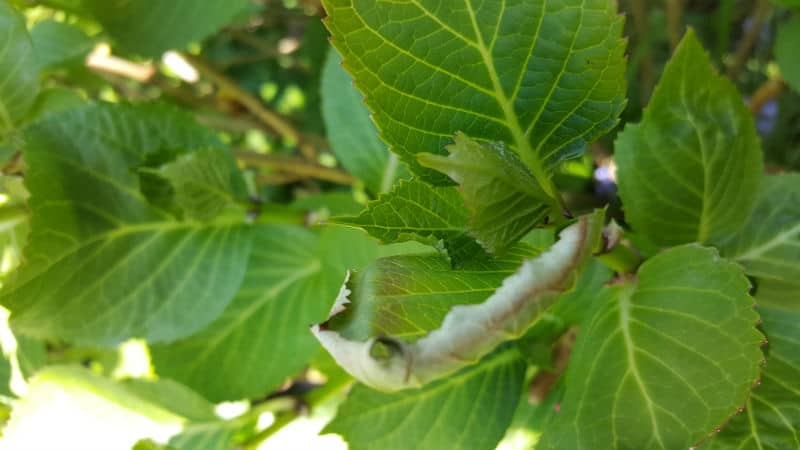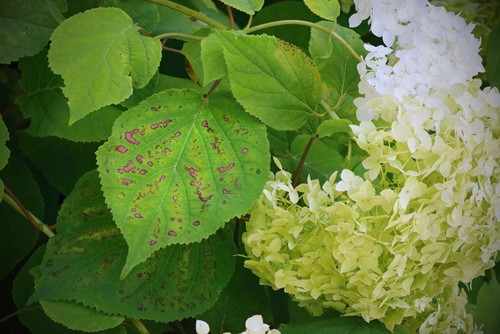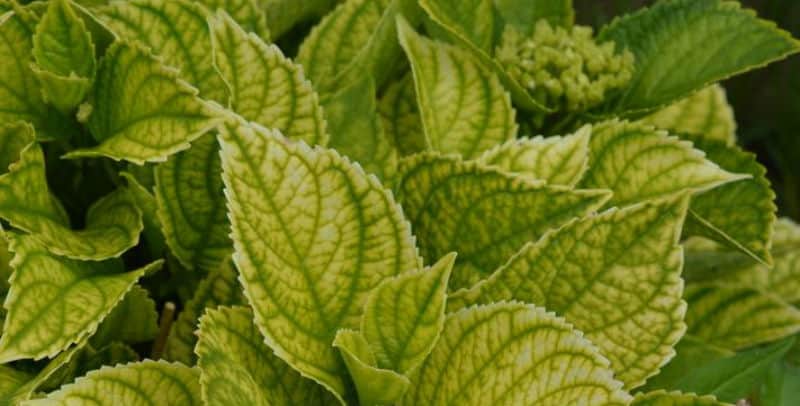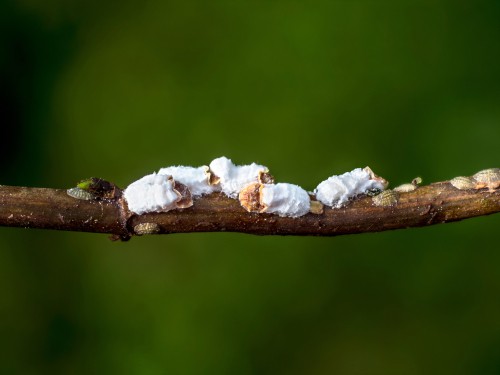
Hydrangea leaf problems – common problems to look out for
Our site is reader supported, this means we may earn a small commission from Amazon and other affiliates when you buy through links on our site.
Hydrangeas are very easy plants to grow and there are several forms that you can choose depending on where you live. Whether you have a beautiful big leaf or panicle style variety you can enjoy a beautiful display of Summer
Leaf diseases

The most common symptom you will see on your hydrangea is a leaf spot disease, commonly referred to as foliar symptoms. Typically the biggest cause is a fungal problem. Fungal disease in moist conditions, especially those that take place during warm weather will cause leaf spots.
The best way to prevent these fungal diseases from taking hold of your plant is to be careful about how you water your hydrangea. When you water,
- Systemic protection and control of blackspot, powdery mildew and rust
- Use on roses and other flowering or ornamental plants
- Protects new growth and protects plants for over 3 months, when used at intervals recommended in usage instructions
- Use between March to September
- Apply using a garden pressure sprayer washed before and after use
- Ready-to-use hand spray
- Gives systemic control of rose blackspot, powdery mildew and rust
- Controls existing diseases and protects new growth
- Quickly treats roses, garden flowers and decorative shrubs, trees and climbers

Bacterial leaf spot is another potential problem. Bacterial leaf spot will cause discolouration on your leaves and in some cases, it will actually kill them. The symptoms manifest in different ways. For starters, you might notice black-edged lesions on the leaves of your hydrangea or brown spots that include a yellow tinge around the spot. Usually, these spots are irregular and they’re very small. You might see them at the top of the leaf or the bottom of the leaf. In other cases, you might notice them along the edge of a leaf where it starts to turn brown or yellow and then eventually the least dries up and that brown or yellow spot just brakes off. Again, wet and cool conditions will promote bacterial growth and this bacteria might simply splash onto your hydrangea from debris in your soil and then reproduce in a matter of hours. If you notice the bacterial symptoms on the leaves of your hydrangea you can get a bactericide to treat the condition, remove affected leaves and prevent it from spreading.
If it isn’t a fungal or bacterial problem simply might be mildew which is technically another type of fungus. Powdery mildew is very common in ornamental plants in particular. It won’t kill your hydrangea but it will impact its overall appearance. You might notice that the leaves are covered with white powdery mildew and that your flowers are not blooming. This is typically the result of poor air circulation and damp conditions so you can combat it by increasing the air circulation and getting rid of the humidity. Again we recommend removing
- LEAF DISEASES: Controls all major leaf diseases of roses and ornamental plants, such as blackspot, powdery mildew, white rust, leaf spot, and box blight
- EFFECTIVE FORMULA: Fast acting contact and systemic formula ensures it gets working quickly, whilst protecting for up to 3 weeks
- SUITABLE FOR: Suitable for use on houseplants, ornamental garden plants, and select edibles
- EASY TO USE: Convenient, ready to use spray with twist and lock function for quick application
- HOW TO USE: Use at the first sign of infection for best results
Pests that affect hydrangea leaves

Not every pest you see on the leaves of your hydrangea is cause for concern. Spiders, for example, are perfectly fine because they feed on the insects that might be causing problems. However, spider mites are a different story. These
If you see spider mites you want to spray water on them to knock them off your hydrangea leaves.
Aphids and whiteflies do a similar thing by removing sap from the hydrangea tissue which causes the leaves to turn yellow, curl up, and fall off prematurely. You want to remove these with a forceful blast of water or with a mixture of water and dish soap. If you use the water and dish soap mixture make sure you don’t do it when the sun is directly overhead or it could scorch the leaves. In either case, the point is to remove the pests from the leaves entirely but make sure you get rid of every last one or they will come back and multiply. You can also use pesticides but we recommend trying as explained above first as we try to avoid chemicals if possible.
- Kills all major insect pests, including whitefly, greenfly, black fly, red spider mite, caterpillars and lily beetle, scale insects and mealy bugs For use on flowers, fruit and vegetables 1 ltr
- For use on flowers, fruit and vegetables
- 1 Litre
- The Bug Clear Ultra Gun is suitable for both indoors and outdoors use including conservatories.
Last update on 2025-12-13 / Affiliate links / Images from Amazon Product Advertising API



